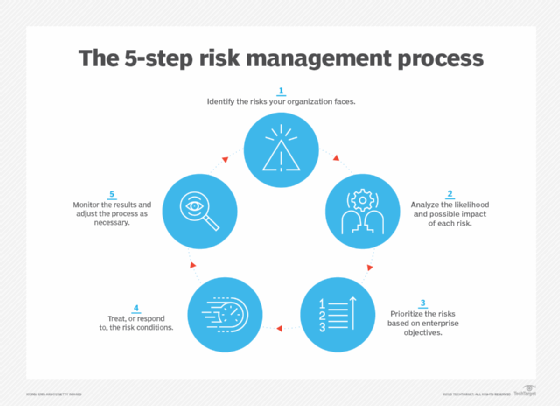Exploring the Enduring Benefits and Importance of Risk Management for Startups
Exploring the Enduring Benefits and Importance of Risk Management for Startups
Blog Article
Discovering the Significance of Risk Management for Effective Decision-Making Approaches
In the elaborate globe of organization, Risk Management becomes an essential consider the decision-making procedure. The ability to determine prospective threats and opportunities, and strategize accordingly, can spell the difference in between success and failure. With tools such as SWOT and PESTEL, organizations are equipped to make informed choices, promoting durability and adaptability in an ever-changing setting. Wondering just how this works? Let's unload the dynamics even more.
Understanding the Concept of Risk Management
Risk Management, a crucial part in decision-making, is usually misunderstood or oversimplified. Risk Management includes self-displined and organized techniques, making use of information and informative assessments. From monetary unpredictabilities, legal liabilities, tactical Management mistakes, to mishaps and all-natural disasters, it attends to different threats - importance of risk management.
The Function of Risk Management in Decision-Making Processes
In the world of calculated planning and organization procedures, Risk Management plays an important function in decision-making procedures. Risk Management thus becomes a crucial tool in decision-making, aiding leaders to make informed selections based on an extensive understanding of the threats involved. Risk Management offers as a crucial part in the decision-making procedures of any type of company.

How Risk Management Improves Strategic Planning
In the context of strategic planning, Risk Management plays a critical function. Initiating with the identification of prospective threats, it additionally encompasses the application of Risk reduction steps. The function of Risk Management is dynamic but not static, as it requires continuous surveillance and adjusting of strategies.
Identifying Potential Risks

Implementing Risk Mitigation
Risk reduction techniques can vary from Risk evasion, Risk transfer, to risk decrease. Each strategy needs to be tailored to the specific Risk, considering its potential impact and the organization's Risk tolerance. Efficient Risk mitigation requires a deep understanding of the Risk landscape and the possible impact of each Risk.
Tracking and Adjusting Techniques
Though Risk mitigation is a critical step in critical planning, continuous tracking and change of these strategies is just as crucial. It additionally gives a possibility to evaluate the success of the Risk Management measures, allowing modifications to be made where required, more improving strategic planning. Monitoring and adjusting Risk Management approaches is a crucial element for improving an organization's durability and strategic preparation.
Case Studies: Effective Risk Management and Decision-Making
Worldwide of service and money, successful Risk Management and decision-making typically act as the pillars of thriving enterprises. One such entity is a multinational oil business that reduced economic loss by hedging against changing oil prices. In one more circumstances, a tech startup thrived by determining and approving risky, high-reward strategies in an unstable market. A worldwide financial institution, confronted with governing unpredictabilities, effectively browsed the situation with aggressive Risk analysis and dynamic decision-making. These instances highlight the worth recommended you read of sharp Risk Management in decision-making procedures. It is not the lack of Risk, but the Management of it, that usually differentiates successful business from not successful ones. These situations underscore the vital function of Risk Management in critical decision-making. importance of risk management.
Devices and Techniques for Reliable Risk Management
These tools, such as Risk registers and warmth maps, help in recognizing and assessing prospective dangers. Risk feedback techniques, a crucial part of Risk Management, include accepting, staying clear of, transferring, or mitigating risks. With these techniques and devices, decision-makers can browse the complex landscape of Risk Management, thereby continue reading this helping with informed and effective decision-making.
Future Trends in Risk Management and Decision-Making Strategies
As we explore the large landscape of Risk Management, it becomes obvious that the devices and strategies utilized today will certainly remain to progress. Future patterns point towards an increased dependence on innovation, with man-made knowledge and maker learning more tips here playing considerable duties. These technologies will allow companies to predict prospective dangers with higher precision and make more informed decisions. Additionally, there will be an expanding focus on resilience, not simply in handling dangers but also in bouncing back from negative circumstances. The principle of Risk culture, where every member of an organization is aware and entailed in Risk Management, will certainly gain a lot more prestige. These patterns herald a more aggressive and comprehensive strategy in the direction of Risk Management and decision-making.
Final thought

Risk Management thus becomes an important tool in decision-making, assisting leaders to make informed options based on a comprehensive understanding of the dangers entailed. Risk mitigation approaches can range from Risk evasion, Risk transfer, to run the risk of decrease (importance of risk management). Efficient Risk reduction requires a deep understanding of the Risk landscape and the prospective influence of each Risk. Risk action methods, a key component of Risk Management, involve approving, staying clear of, moving, or mitigating threats. The concept of Risk society, where every member of an organization is aware and involved in Risk Management, will certainly gain a lot more prestige
Report this page